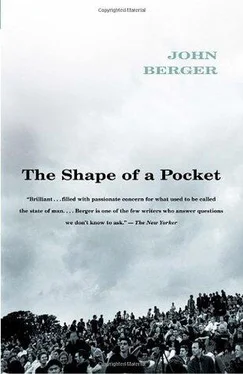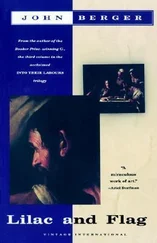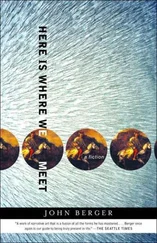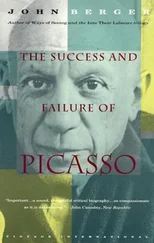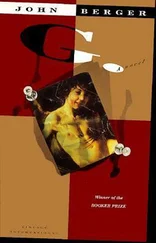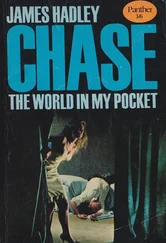When they had gone, I took the least bad drawing and started working on it with colours — acrylic. Suddenly, like a weather vane swinging round because the wind has changed, the portrait began to look like something. Her ‘likeness’ now was in my head — and all I had to do was to draw it out, not look for it. The paper tore. I rubbed on paint sometimes as thick as ointment. At four in the morning the face began to lend itself to, to smile at, its own representation.
The next day the frail piece of paper, heavy with paint, still looked good. In the daylight there were a few nuances of tone to change. Colours applied at night sometimes tend to be too desperate — like shoes pulled off without being untied. Now it was finished.
From time to time during the day I went to look at it and I felt elated. Because I had done a small drawing I was pleased with? Scarcely. The elation came from something else. It came from the face’s appearing — as if out of the dark. It came from the fact that Bogena’s face had made a present of what it could leave behind of itself.
What is a likeness? When a person dies, they leave behind, for those who knew them, an emptiness, a space: the space has contours and is different for each person mourned. This space with its contours is the person’s likeness and is what the artist searches for when making a living portrait. A likeness is something left behind invisibly.
Soutine was among the great painters of the twentieth century. It has taken fifty years for this to become clear, because his art was both traditional and uncouth, and this mixture offended all fashionable tastes. It was as if his painting had a heavy broken accent and so was considered inarticulate: at best exotic, and at worst barbarian. Now his devotion to the existent becomes more and more exemplary. Few other painters have revealed more graphically than he the collaboration, implicit in the act of painting, between model and painter. The poplars, the carcasses, the children’s faces on Soutine’s canvases clung to his brush.
Shitao — to quote him again — wrote:
Painting is the result of the receptivity of ink: the ink is open to the brush: the brush is open to the hand: the hand is open to the heart: all this in the same way as the sky engenders what the earth produces: everything is the result of receptivity.
It is usually said about the late work of Titian or Rembrandt or Turner that their handling of paint became freer. Although, in a sense, true, this may give a false impression of wilfulness. In fact these painters in their old age simply became more receptive, more open to the appeal of the ‘model’ and its strange energy. It is as if their own bodies fall away.
When once the principle of collaboration has been understood, it becomes a criterion for judging works of any style, irrespective of their freedom of handling. Or rather (because judgement has little to do with art) it offers us an insight for seeing more clearly why painting moves us.
Rubens painted his beloved Hélène Fourment many times. Sometimes she collaborated, sometimes not. When she didn’t, she remains a painted ideal; when she did, we too wait for her. There is a painting of roses in a vase by Morandi (1949) in which the flowers wait like cats to be let into his vision. (This is very rare for most flower paintings remain pure spectacle.) There is a portrait of a man painted on wood two millennia ago, whose participation we still feel. There are dwarfs painted by Velazquez, dogs by Titian, houses by Vermeer in which we recognise, as energy, the will-to-be-seen.
More and more people go to museums to look at paintings and do not come away disappointed. What fascinates them? To answer: Art, or the history of art, or art appreciation, misses, I believe, the essential.
In art museums we come upon the visible of other periods and it offers us company. We feel less alone in face of what we ourselves see each day appearing and disappearing. So much continues to look the same: teeth, hands, the sun, women’s legs, fish … in the realm of the visible all epochs coexist and are fraternal, whether separated by centuries or millennia. And when the painted image is not a copy but the result of a dialogue, the painted thing speaks if we listen.
In matters of seeing Joseph Beuys was the great prophet of the second half of our century, and his life’s work was a demonstration of, and an appeal for, the kind of collaboration I’m talking about. Believing that everybody is potentially an artist, he took objects and arranged them in such a way that they beg the spectator to collaborate with them, not this time by painting, but by listening to what their eyes tell them and remembering.
I know of few things more sad (sad, not tragic) than an animal who has lost its sight. Unlike humans, the animal has no supporting language left which can describe the world. If on a familiar terrain, the blind animal manages to find its way about with its nose. But it has been deprived of the existent and with this deprivation it begins to diminish until it does little but sleep, therein perhaps hunting for a dream of that which once existed.
The Marquise de Sorcy de Thélusson, painted in 1790 by David, looks at me. Who could have foreseen in her time the solitude in which people today live? A solitude confirmed daily by networks of bodiless and false images concerning the world. Yet their falseness is not an error. If the pursuit of profit is considered as the only means of salvation for mankind, turnover becomes the absolute priority, and, consequently, the existent has to be disregarded or ignored or suppressed.
Today, to try to paint the existent is an act of resistance instigating hope.
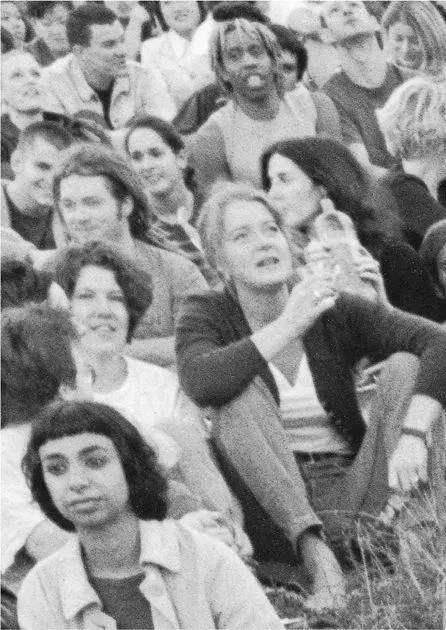
3 Studio Talk (for Miguel Barceló)
A scrap of paper crumpled up and thrown on the studio floor amongst unstretched canvases, on which you stand, pails of pigment — some mixed with clay, the odd saucepan, broken sticks of charcoal, rags, discarded drawings, two empty cups. On the scrap of paper are written two words: FACE and PLACE.
The studio was once a bicycle factory, no? You work here in your painting shoes and clothes. The shirt and trousers were originally striped. Now, like the shoes, they are encrusted with pigment. So I picture you as two people: a man about to ride away on his bicycle and a convict.
However, the only thing which matters, when the day is done, is what lies painted on the floor or leaning against the walls, waiting to be seen the next day. What matters is what the changing light can never quite reveal — the thing, to which one is nearest, when one fears one has probably lost it.
Face. Whatever the painter is looking for, he’s looking for its face. All the search and the losing and the re-finding is about that, isn’t it? And ‘its face’ means what? He’s looking for its return gaze and he’s looking for its expression — a slight sign of its inner life. And this is true whether he’s painting a cherry, a bicycle wheel, a blue rectangle, a carcass, a river, a bush, a hill or his own reflection in a mirror.
Photos, videos, films never find the face; at their best they find memories of appearances and likenesses. The face, by contrast, is always new: something never before seen and yet familiar. (Familiar because, when asleep, we perhaps dream of the face of the whole world, into which at birth we were blindly thrown.)
We see a face only if it looks at us. (Like Vincent’s sunflower.) A profile is never a face, and cameras somehow turn most faces into profiles.
When we have to stop before a finished painting, we stop as before an animal who is looking at us. Yes, this is even true for Antonello da Messina’s Pietà with an Angel! The paint laid or brushed or smeared on to the surface is the animal, and its ‘look’ is its face. Think of the face of Vermeer’s View of Delft. Later the animal hides, but it’s always there when it first stops us and won’t allow us to go on.
Читать дальше
